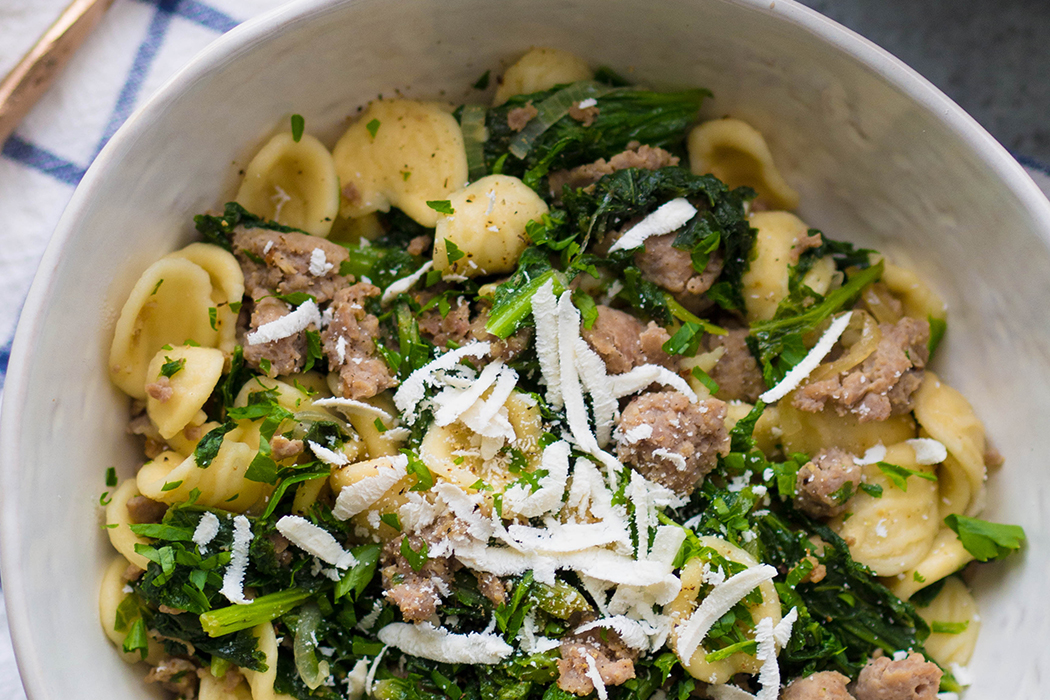


Your Leafy Greens Guide! CHELSEY AMER
Chelsey Amer, M.S., R.D.N., C.D.N. is the owner of Chelsey Amer Nutrition, an online nutrition counseling and consulting business based in New York City where she helps make nutrition approachable. Chelsey helps women feel and look their best while getting in touch with their bodies and discovering how all foods can fit in a healthy lifestyle. When Chelsey is not working with her 1-on-1 clients, she develops tasty, food-allergy friendly recipes and photographs every bite for her healthy food blog on ChelseyAmerNutrition.com! Check out her new ebook, Thrive in 5, packed with 50 balanced 20-minute, 5-ingredient meals.
LEARN MORE ABOUT CHELSEY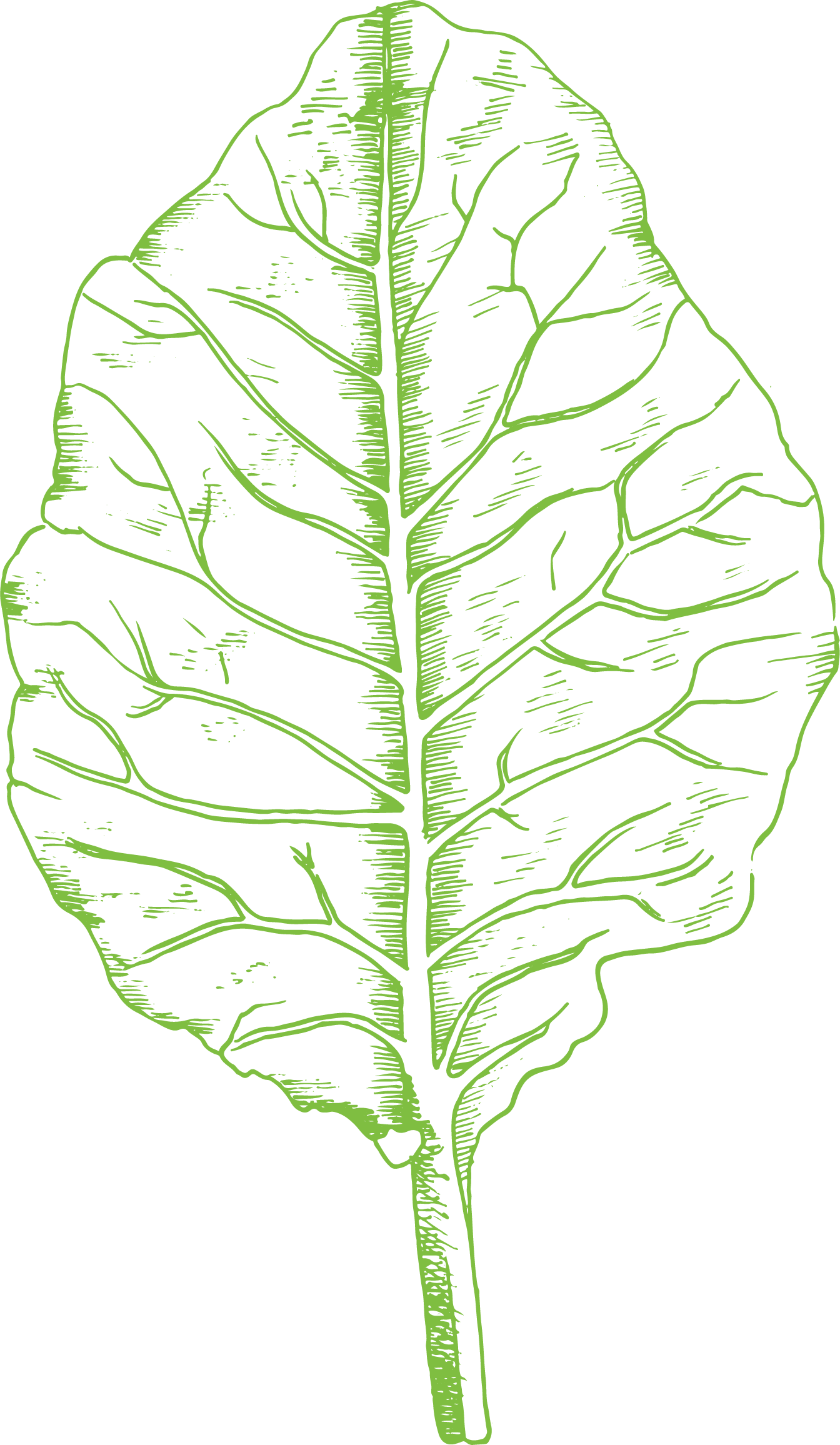
Collard Greens
Collard greens are a member of the Brassica oleracea family of cruciferous vegetables, including bok choy, kale, broccoli, cabbage, Brussels sprouts, and more. Texturally, collard greens are most akin to kale and cabbage, with tough leaves that may even taste slightly bitter. Collard greens can be enjoyed raw, but are most commonly cooked.
Collard greens are an excellent source of vitamin K. Vitamin K has a well-established role in blood clotting, but researchers are also discovering the role vitamin K plays in bone health. One study found that low intake of vitamin K may increase the risk of hip fractures in women. Other studies demonstrate that vitamin K is important to increase bone mineral density in individuals with osteoporosis and reduce fracture rates. Collard greens are also a good source of calcium. Vitamin K works synergistically with calcium to support bone health.
Collard greens are also a very good source of fiber, which contributes to their ability to help reduce LDL cholesterol levels. One study found that fiber-like compounds in cruciferous vegetables, including collard greens, binds to bile acids to help excrete them from the body, which helps break down cholesterol. Compared to seven other cruciferous vegetables examined in this study, steamed collard greens did a better job of binding to bile acids for excretion.
The fiber content in collard greens also benefits individuals with diabetes to help reduce blood sugar, promotes satiety, and optimal gut health.
Consumption of collard greens is also linked to reduced cancer risk (see additional sources listed in the “Resources” section):
According to the USDA database, 1 cup raw collard greens contains:
1 cup of raw collard greens are an excellent source of vitamins A, C and K, and folate, plus a very good source of fiber, and a good source of calcium.
Individuals on blood thinners (like Coumadin) should be sure to consume a consistent amount of dark leafy greens, including collard greens, daily to avoid varying their intake of vitamin K.
Add bacon to a large, dry cast iron skillet. Cook over medium-high heat until crispy, about 5 minutes. Remove bacon from pan and lower heat to low-medium. Then add garlic and shallots, sautéing until translucent, about 3 minutes. Add collard greens, salt and pepper, continuing to sauté until greens are wilted, but still bright green.... READ MORE.
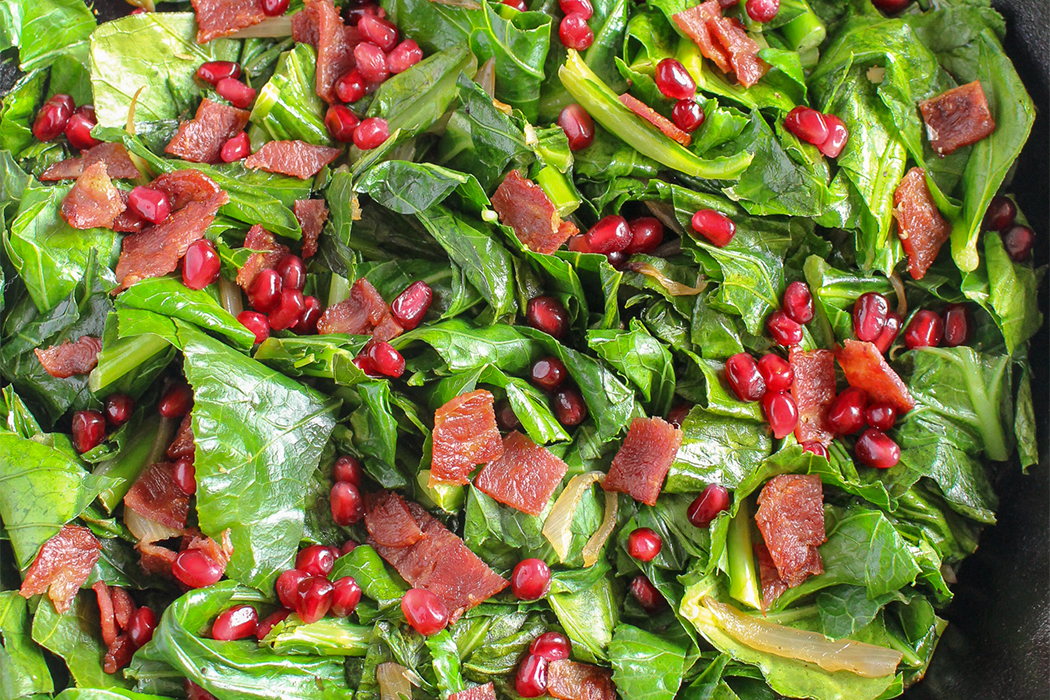
Prepare rice. Combine rice, vegetable stock, and 1/2 teaspoon salt in a medium-sized stock pot. Bring to a boil, then cover and reduce heat to a simmer and cook for 45 minutes. Turn off heat and let sit for 10 minutes to steam. While the rice is cooking, prepare the remaining ingredients. Add olive oil,... READ MORE.
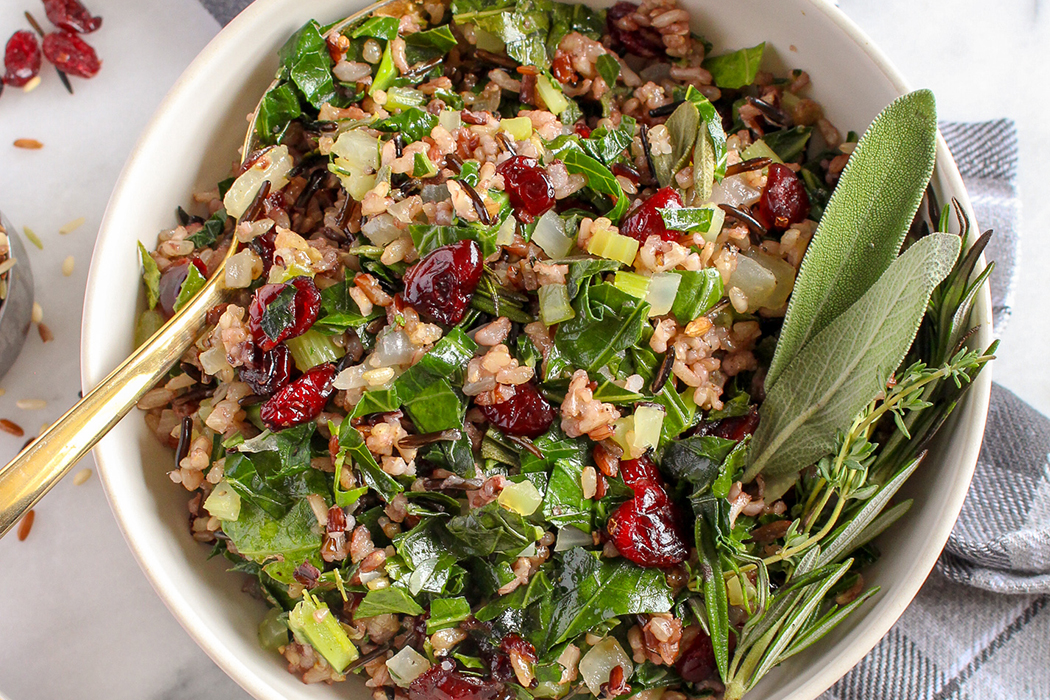
Preheat oven to 375°F. Bring a large pot (about 2 quarts) of salted water to boil. Cook pasta according to package instructions, until al dente. Drain pasta in a colander when done cooking. Spread about 1/2 cup tomato sauce on the bottom of a circular pie dish or 8 x 8 baking dish. Set aside.... READ MORE.

In a large pot over medium heat, heat the olive oil until oil is shiny and fragrant. Add the onion and sauté, stirring occasionally, for 10 minutes. Onion should be translucent and lightly golden brown. Add lentils, carrots, minced garlic, and seasonings and stir. Pour in broth and/ or water, cover, and simmer for 20... READ MORE.
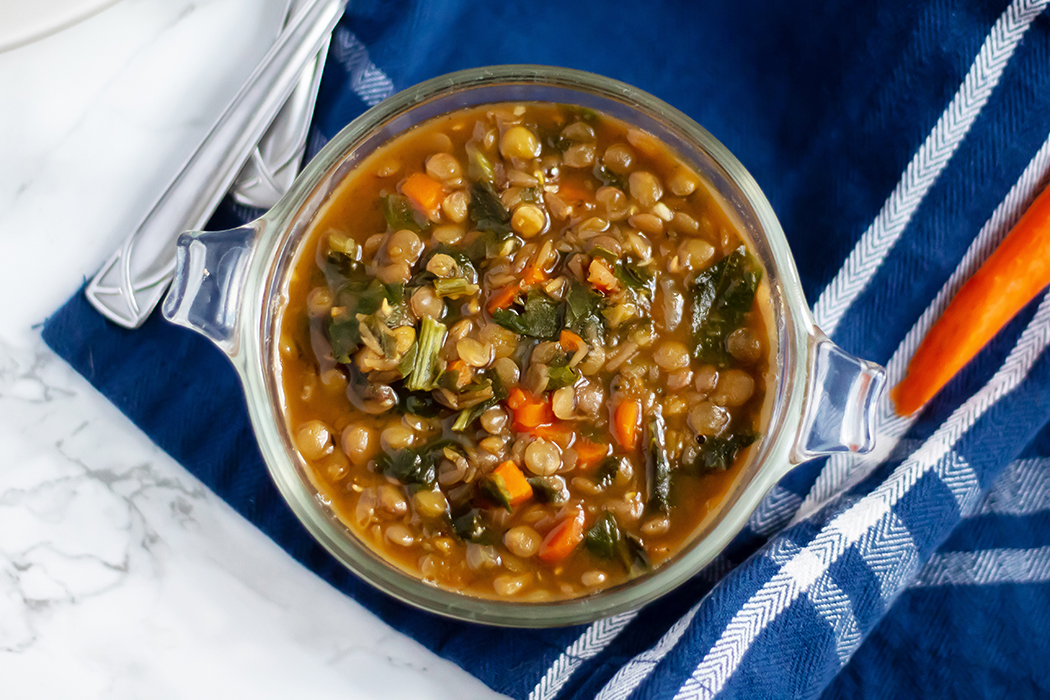
Directions Preheat a large cast iron skillet (or other heavy skillet) over medium-high heat. While the skillet is getting hot, quickly chop the turnip greens into smaller pieces if desired. I like to take a handful of greens at a time and run a knife through like I'm creating ribbons of turnip greens. Mince garlic... READ MORE.
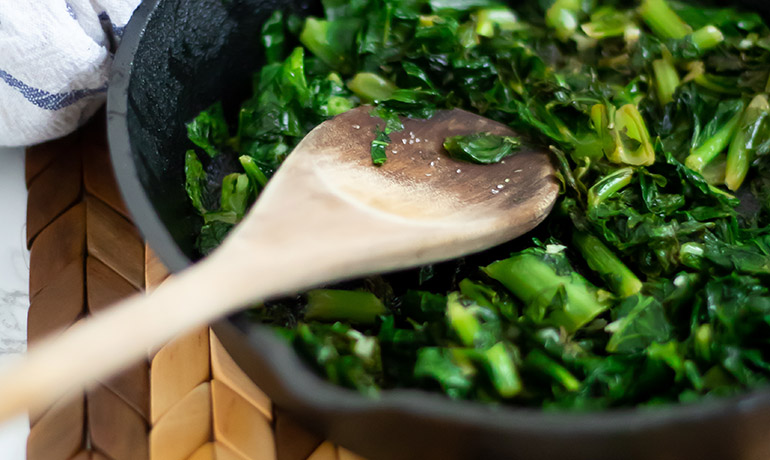
Directions: If cooking quinoa from scratch, bring 1 1/3 cup water to a boil, add 2/3 cup dry quinoa, cover, reduce to a simmer, and cook 15 minutes. Quinoa is when it is fluffy and all of the water has been absorbed and cooked off. Let quinoa cool. Combine dressing ingredients in a small bowl:... READ MORE.

Preheat oven to 400 degrees F. Toss chickpeas and olive oil together and season with salt. Spread evenly on a large baking sheet and roast for 30 minutes, stirring every 10 minutes, until crispy and golden. Remove from oven and set aside until ready to use. Whisk together dressing ingredients in a small bowl. Season with... READ MORE.
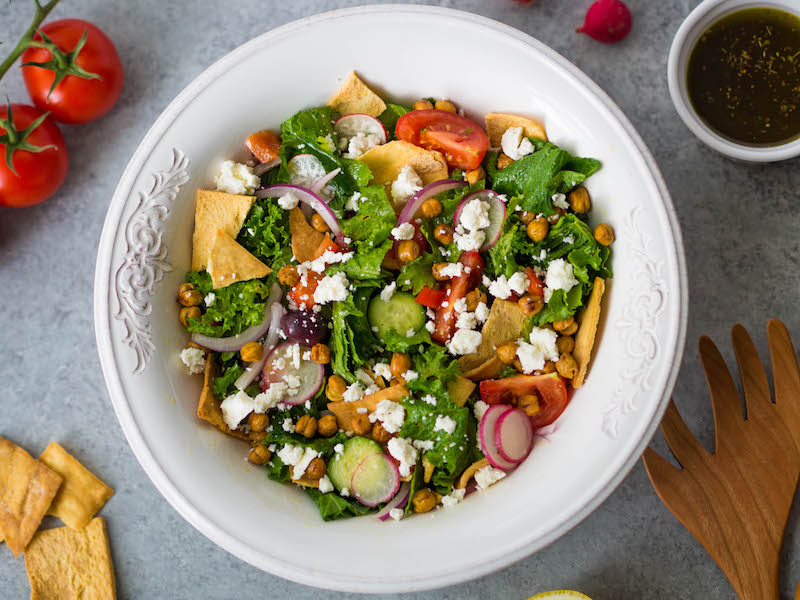
Place mustard greens, almonds, garlic, and parmesan in a food processor. Pulse to chop. Slowly stream in olive oil while motor is running, scrapping down sides as needed, until pesto is creamy. Season with salt and black pepper to taste. Preheat oven to 500 degrees. Dust pizza dough with flour and roll out into a... READ MORE.

Bring a large pot of salted water to a boil. Cook orecchiette according to package instructions. Drain, reserving 3/4 cup starchy cooking water, and set pasta aside until ready to use. Meanwhile, heat 1 tablespoon olive oil in a large skillet on medium-high heat. Add sausage, crumbling with the back of a spatula, and cook... READ MORE.
